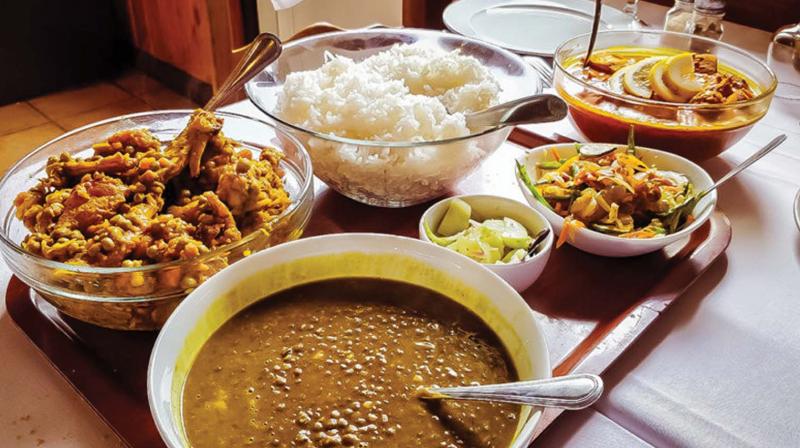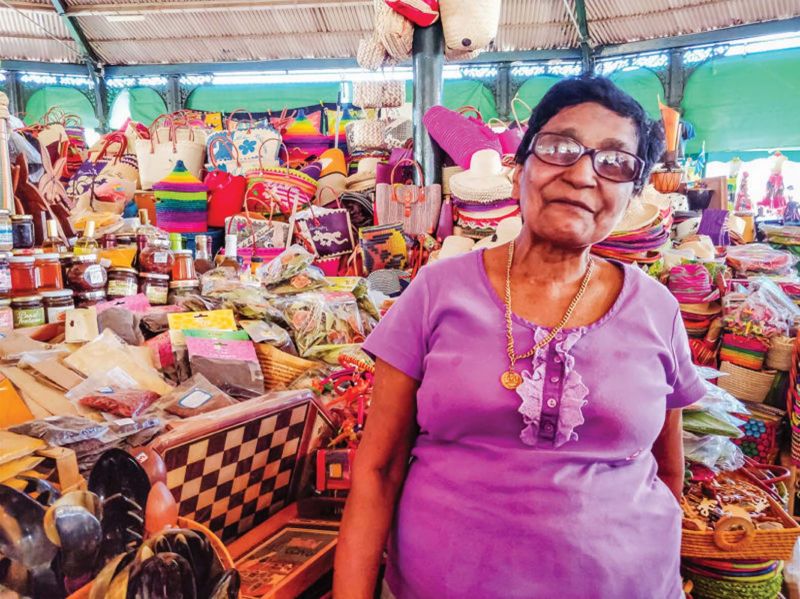When curry became cari

It's a sunny day at the beach in the French Reunion Island in the Indian Ocean.
Couples are sprawled over large beach towels soaking in the sun. Skimming the sea are kayakers, surfers and parasailers. I am at a beach picnic hosted by Jacky Aroumougam, celebrity chef of Reunion Island; a French-speaking man of Indian origin. The spread on the picnic table is authentic ‘pei (local) or Creole cuisine. This is French country, but I see no croissants or baguettes in front of me. Instead, there's rice, lentils, vegetables, pickles and curry. “80% of Creole cuisine is inspired by Indian cuisine,” explains Jacky.
The five-million-year-old volcanic Reunion Island was first discovered by the Arab traders plying the spice route. Then came the Portuguese, English and finally the French who claimed the uninhabited island in 1643. At first, they used the island as a prison site. They sent 12 convicts to decay and die. A few years later the officials discovered that the prisoners were thriving on the fertile island. The French then decided to move in and make it their paradise. Today, the 65 km long and 45 km wide Reunion Island, with 300 micro-climates, is filled with the fragrance of sugarcane and vanilla. The salt of the ocean lingers in the air. So, does the flavour of Indian spices headlining the Creole cuisine.
 Mary Theresa Subramaniam
Mary Theresa Subramaniam
I met Mary Theresa Subramaniam at the Saint-Pierre market. Dressed in a skirt and blouse, the only visible Indian marker on her are her dusky South Indian features. She speaks and thinks in French. She knows she might have “few relatives back in India”, but has no clue about their whereabouts. She's never visited India and has no great desire to do so. It's a common narrative amongst the Indian community here. Mary's grandfather came to the island with his wife and nine children. After a few months, the dastardly man abandoned his family and returned to Tamilnadu. His young wife had to raise her brood single-handedly. She was cut off from all that was familiar to her. The only link to her life back home was a few hastily written recipes that she had brought with her. It included her mother's chicken curry.
For numerous Indians in the island, the curry must've held warm memories of home, their solace and comfort. Cooking curry back then must've been like Skyping home today. As Indians began to homogenise, their curries too found diverse expressions. It allowed for the inclusion of local ingredients. Over time, the curry became 'cari' and a staple of Creole cuisine. Today, cari is the most popular dish on the island. Like dal in India, no two caris on Reunion Island are the same. Families have their secret cari-recipes. The cari can be vegetarian and non-vegetarian. Chicken, duck, pork, mussels, chouchou, potato and jackfruit (which was originally brought from India) are some of the main ingredients used to make cari. However, the most famous cari dish here is the Cabri massale (goat curry). This spicy cari is similar to the mutton curry made in Tamilnadu. Cari is usually served with rice, pilaf or beans and lentils.
Jackfruit, ginger, tamarind, turmeric, mango and even the banyan trees on the island can trace its roots back to India. There are more than twenty-five varieties of mango in Reunion Island, and the Islanders' favourite way of eating mangoes is to cut raw mangoes into thin strips and eat it with a dash of salt and chilli. It reminded me of my summer holidays in Chennai which was never complete without green mangoes, uppu and molakkaipodi (salt & chilli powder).
(The author is an artist, illustrator, photographer, columnist and a traveler)

